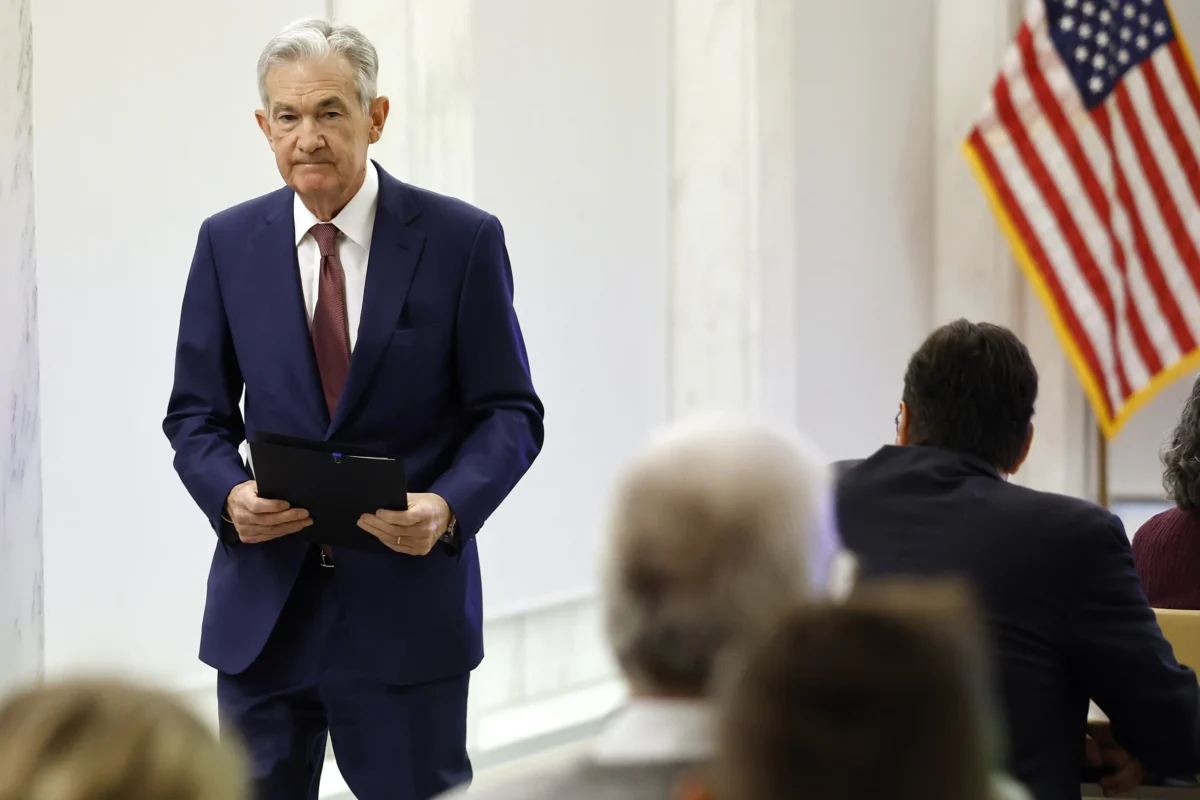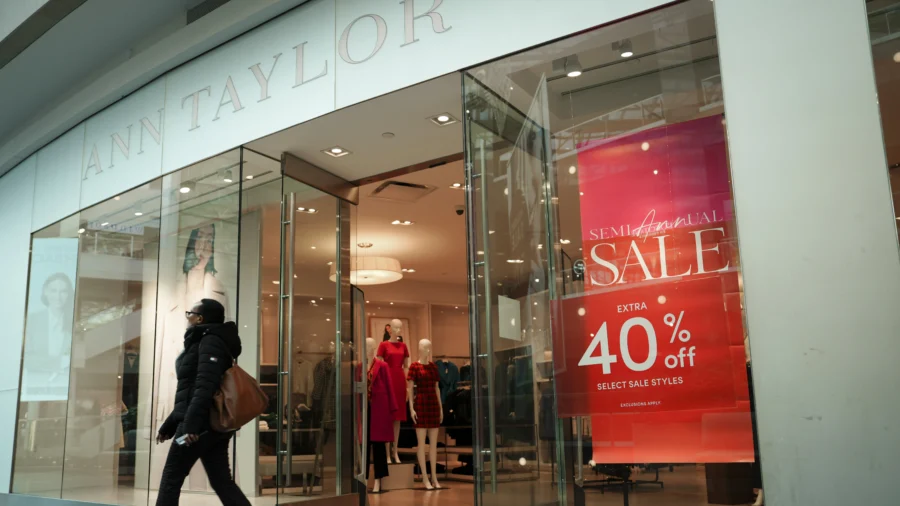The U.S. economy expanded above 3 percent in the fourth quarter, topping economists’ expectations and ending 2023 on a high note.
In the year’s final three months, the GDP growth rate—a measure of goods and services produced for sale in the United States—was 3.3 percent, down from 4.9 percent in the third quarter and above the consensus estimate of 2 percent, according to the Bureau of Economic Analysis (BEA).
Overall, the U.S. economy grew 2.5 percent in 2023, up from 1.9 percent in 2022.
Consumer and government spending accounted for much of the economic growth in the fourth quarter.
Personal consumption expenditures ballooned 2.8 percent, with goods and services spending rising 3.8 percent and 2.4 percent, respectively. Real consumer spending slowed from 3.1 percent. Additionally, this category added 1.91 percent to the final reading, representing 57 percent of GDP growth.
Private domestic investment clocked in at a tepid 2.1 percent. However, this was offset by government spending that surged by 3.3 percent, including a 2.5 percent increase federally and a 3.7 percent jump at the state and local level.
Government spending contributed close to 0.6 percent of the GDP print in the last quarter, accounting for roughly a fifth of economic growth. Gross private domestic investment contributed 0.38 percent.
Exports rocketed 6.3 percent, while imports edged up 1.9 percent. Net exports of goods and services made up 0.43 percent of the GDP reading.
Heading into the fourth quarter GDP report, economists and regional central banks anticipated a 2 percent reading.
The Federal Reserve Bank of Atlanta’s GDPNow model and the New York Fed Staff Nowcast expected 2.4 percent. The St. Louis Fed’s Real GDPNowcast projected a 2 percent expansion in the final three months of 2023.
Meanwhile, in the rest of the BEA report, real (inflation-adjusted) disposable personal income advanced 2.5 percent, up from 0.3 percent in the third quarter. Personal savings fell to 4 percent in the last quarter, down from 4.2 percent.
On the inflation front, the personal consumption expenditures (PCE) price index—the Federal Reserve’s preferred inflation gauge—eased from 2.6 percent to 1.7 percent. Core PCE, which excludes the volatile food and energy sectors, was unchanged at 2 percent.
Market Reaction
The financial markets did not have much reaction to the GDP data in pre-market trading, with the leading benchmark indexes flat.
U.S. Treasury yields were red across the board, including the benchmark 10-year yield that slumped below 4.15 percent.
The U.S. Dollar Index (DXY), a gauge of the greenback against a basket of currencies, was also unchanged at 103.25 after the latest economic figures were released.
Looking to Q1
The consensus among economists is that the U.S. economy could begin to decelerate and start to slow down in the first quarter.
Market observers believe the largest contributing factor to a cooling economic landscape this year will be consumers putting a lid on their spending, whether due to the lagged effects of tighter financial conditions or a slowing labor market.
If these prognostications are accurate, it would be a dramatic shift from a year ago, as many experts purport that a resilient consumer kept the economy afloat.
The immense debt accumulation that accelerated last year could catch up with U.S. shoppers, particularly as credit card interest rates hover near record highs of above 20 percent.
Additionally, a drawdown in pandemic-era savings has diminished households’ cushions. The personal savings rate is about 4 percent, while the net savings rate as a percentage of gross domestic income has been in negative territory for three straight quarters.
A recent Bankrate survey found that less than half of Americans (44 percent) say they could afford a $1,000 emergency expense from their savings. Nearly two-thirds (63 percent) note that inflation has been the most significant culprit for a paucity of savings.
“All too many Americans continue to walk on thin ice, financially speaking, with fewer than half indicating they would pay an emergency expense of $1,000 or more from savings,” said Bankrate Senior Economic Analyst Mark Hamrick in a statement. “Inflation has been a key culprit standing in the way of further progress on the savings front. Fortunately, rising interest rates have also provided more generous returns on savings.”
Despite gloomy forecasts for the first quarter, early estimates suggest robust growth. The New York Fed Staff Nowcast estimates a 2.4 percent expansion in the January-to-March span.
Should the U.S. economy hold steady, economists believe this could afford the monetary authorities more room to keep interest rates higher for longer.

Fed Chairman Jerome Powell departs after delivering remarks to The Federal Reserve’s Division of Research and Statistics Centennial Conference in Washington on Nov. 8, 2023. (Chip Somodevilla/Getty Images)“The jobs market is tight, inflation is above target, consumer spending is holding up and recent Fed commentary suggests they are in no hurry to loosen policy. As such we continue to favor May as the start point for interest rate cuts rather than March as the market currently favors,” said ING economists in a research note.
Fed policy rate expectations have been shifting as of late.
According to the CME FedWatch Tool, the futures market is no longer penciling in rate cuts at the January and March Federal Open Market Committee (FOMC) policy meetings. Most investors anticipate a quarter-point reduction to the benchmark Fed funds rate at the May meeting.
In the end, this could be a mixed bag for President Joe Biden and his “Bidenomics” doctrine heading into the 2024 election.
State of Bidenomics
The White House has been touting the enormous shift in consumer sentiment, pointing to the substantial increase in the University of Michigan’s Consumer Sentiment Index, climbing to its highest level since July 2021 this month.
Inflation expectations have also improved. The New York Fed’s December Survey of Consumer Expectations showed that the one-year-ahead horizon slipped to 3 percent, the lowest level since January 2021.
“Our plan is delivering for the American people, building an economy from the middle out and the bottom up, not the top down,” President Biden told a United Auto Workers (UAW) conference in Washington, on Jan. 24.
But while the current administration champions recent data, the numbers are not translating to higher poll numbers.
A recent ABC News-Ipsos poll found that only 33 percent approve of President Biden. President Biden’s approval rating on the economy stood at just 31 percent.
Moreover, a Harvard-Harris survey showed President Biden’s approval rating on the economy was just 40 percent.
Regardless of everything happening in the U.S. and around the world, the economy still takes precedence for voters, says Dr. Dan McMillan, an author and the founder and executive director of Save Democracy in America.
“Performance on the economy is probably the single biggest issue that voters typically vote on,” Mr. McMillan told The Epoch Times. “We’re seeing more signs of confidence. It’s a long way until November, and all these economic indicators seem to be heading in the right direction, so that picture may change for Biden.”
From The Epoch Times


